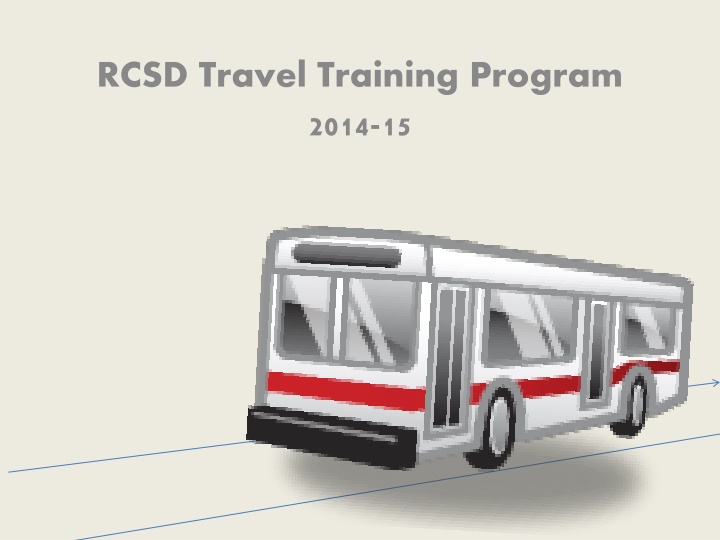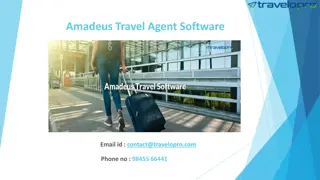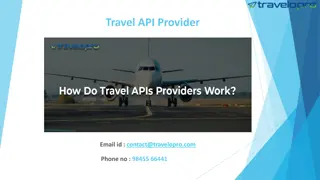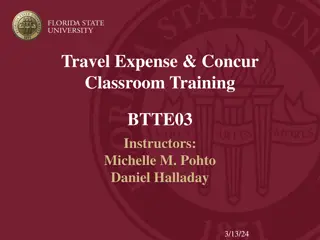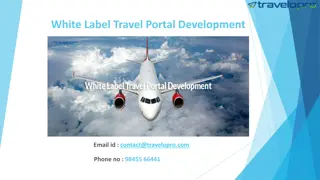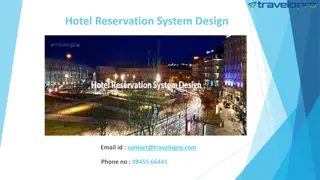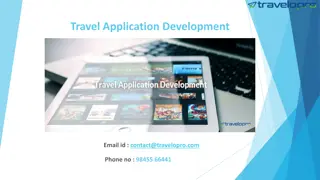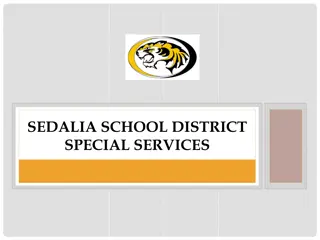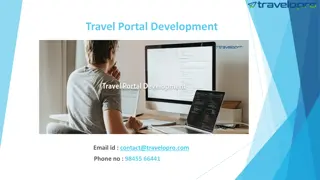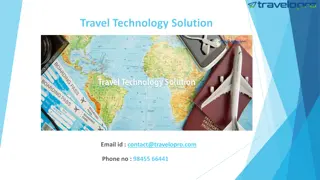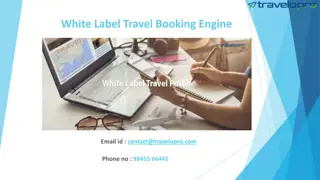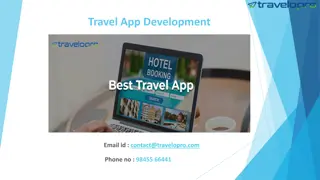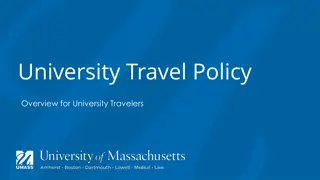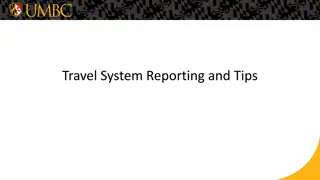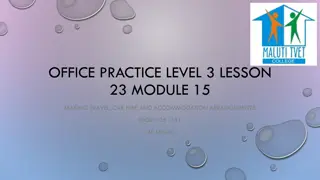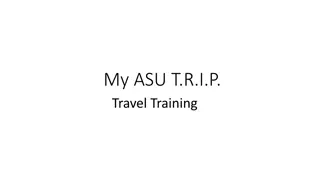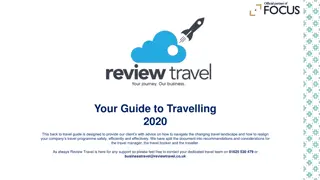RCSD Travel Training Program - Providing Special Education Services
Travel training is a special education service aimed at instructing students with significant cognitive disabilities and other disabilities to develop awareness of their environment. This involves learning skills to move safely within their surroundings. The program also focuses on transportation data for RCSD secondary students with IEP, barriers to travel, scenarios in IEP states, and preparation for post-secondary life and independence through behavioral plans, direct instruction, interventions, and community involvement.
Download Presentation

Please find below an Image/Link to download the presentation.
The content on the website is provided AS IS for your information and personal use only. It may not be sold, licensed, or shared on other websites without obtaining consent from the author.If you encounter any issues during the download, it is possible that the publisher has removed the file from their server.
You are allowed to download the files provided on this website for personal or commercial use, subject to the condition that they are used lawfully. All files are the property of their respective owners.
The content on the website is provided AS IS for your information and personal use only. It may not be sold, licensed, or shared on other websites without obtaining consent from the author.
E N D
Presentation Transcript
RCSD Travel Training Program 2014-15
Part 200 Regulations Travel training is a special education service that meaning providing instruction, as appropriate, to students with significant cognitive disabilities, and any other students with disabilities who require this instruction, to enable to develop an awareness of the environment in which they live; and learn the skills to move effectively and safely from place to place within that environment.
The data shows RCSD Secondary Students with IEP Transportation 2014-15 250 208 200 Number of Student 150 104 100 77 67 50 0 9 10 11 12 Grade Level
RCSD Travel Training Numbers School Year Students 2007-2008 61 2008-2009 56 2009-2010 36 2010-2011 35 2011-2012 15 2012-2013 25 2013-2014 26
More Data Secondary IEP Transportation per Classification 2014-15 140 128 120 112 99 100 number of Students 80 60 41 36 40 19 20 7 5 5 4 3 3 0 ID OHI LD ED AUT MD SL TBI ORTH HI Deaf VI
Scenarios IEP states: Due to Student A's attentional difficulties and his challenges to solve conflicts without adult support, Student A requires house pick up Student B requires assistance in attending to classroom activities and poor safety judgment in unstructured settings. Student C has difficulty with impulsivity and interpersonal relationships. Due to the student's difficulty with transitions and verbal aggression concerns special transportation is needed. Student E requires special transportation due to her significant learning and communication needs impacting her safety. What are the barriers to travel? OHI OHI OHI LD ID
How can we prepare students for post secondary life and independence? Survey students and parents about their experiences with public transportation Behavior plans addressing behavioral concerns Direct Instruction for learning challenges (reading bus schedules, planning a trip) Interventions and strategies to address attentional issues Working with community agencies Informational sessions Travel Training
Resources Pre-assessment/Screening tools Curriculum supports for special populations Information and training sessions scheduled at multiple times and sites Assistance with coordination for eligible students Agency support
Transportation Education Transportation education creates a culture, accompanied by a coordinated set of practices, to connect students, families, educators, pupil transporters, and public transportation professionals to ensure students have knowledge, access, and choice regarding a continuum of accessible transportation options across grade levels, especially as they transition from school to postsecondary education, employment, and independent living
Students who are better informed about their transportation options are more empowered to get to where they would like to after high school and achieve their goals. Transportation is a key aspect to ensuring a person can become and remain active in his community. The transition from high school and school transportation to post-high school activities with public transportation is a monumental step one that is made easier through attaining the ability to get around on one s own.
Student/Parent Request Travel Training Scenario 1 Primary teacher/CASE share RTS information with the student and parent found in resources section. Student completes pre- assessment and checks yes to Question Experience riding public transportation Student and parent express interest in dismissing house pick up or travel training IEP is amended with parent consent.
Student/Parent Request Travel Training Scenario 2 Student or parent makes a request to the CASE for travel training to remove house pick up transportation Step 1 Student/primary teacher/parent completes pre-assessment Completed form indicates that student has OPWDD eligibility and MSC through an agency Step 2 Pre-assessment is submitted to Transition Team CASE works with Transition Team to coordinate travel training through Agency IEP may be amended if student is successfully trained. Step 3
Student/Parent Request Travel Training Scenario 3 Step 1Student or parent training to remove house pick up transportation Step 2Student/primary assessment Student need is moderate for travel training Step 3CASE reviews posted student would benefit from direct classroom instruction model and requires no further training. makes a request to the CASE for travel teacher/parent completes pre- resources to determine whether Amend IEP to remove transportation services.
Student/Parent Request Travel Training Scenario 4 Step 4 Step 3 Step 2 Step 1 Student or parent makes a request to the CASE for travel training to remove house pick up transportation Student/primary teacher/parent completes pre- assessment CASE reviews posted resources to determine whether student would benefit from direct classroom instruction model and determines that student requires further training Travel training packet is completed and submitted to travel training mailbox. Student need is moderate for travel Upon approval, CASE amends IEP to add travel training. training Mobility Works schedules home to school travel training sessions Evaluation indicates that student can travel independently. IEP is amended to remove house pick up.
Annual Review of Program and Services All secondary students with transportation services must review the appropriateness of that service. Questions: 1. Does the student utilize public transportation at other times? 2. What is the impact of the student s disability on the student s need for transportation services? 3. What is the barrier to student s successful independent travel? 4. If behavior is indicated as the reason for transportation services, is there a BIP and does transportation have a copy of that plan? 5. What is the IEP Goal to address the need for independent travel?
